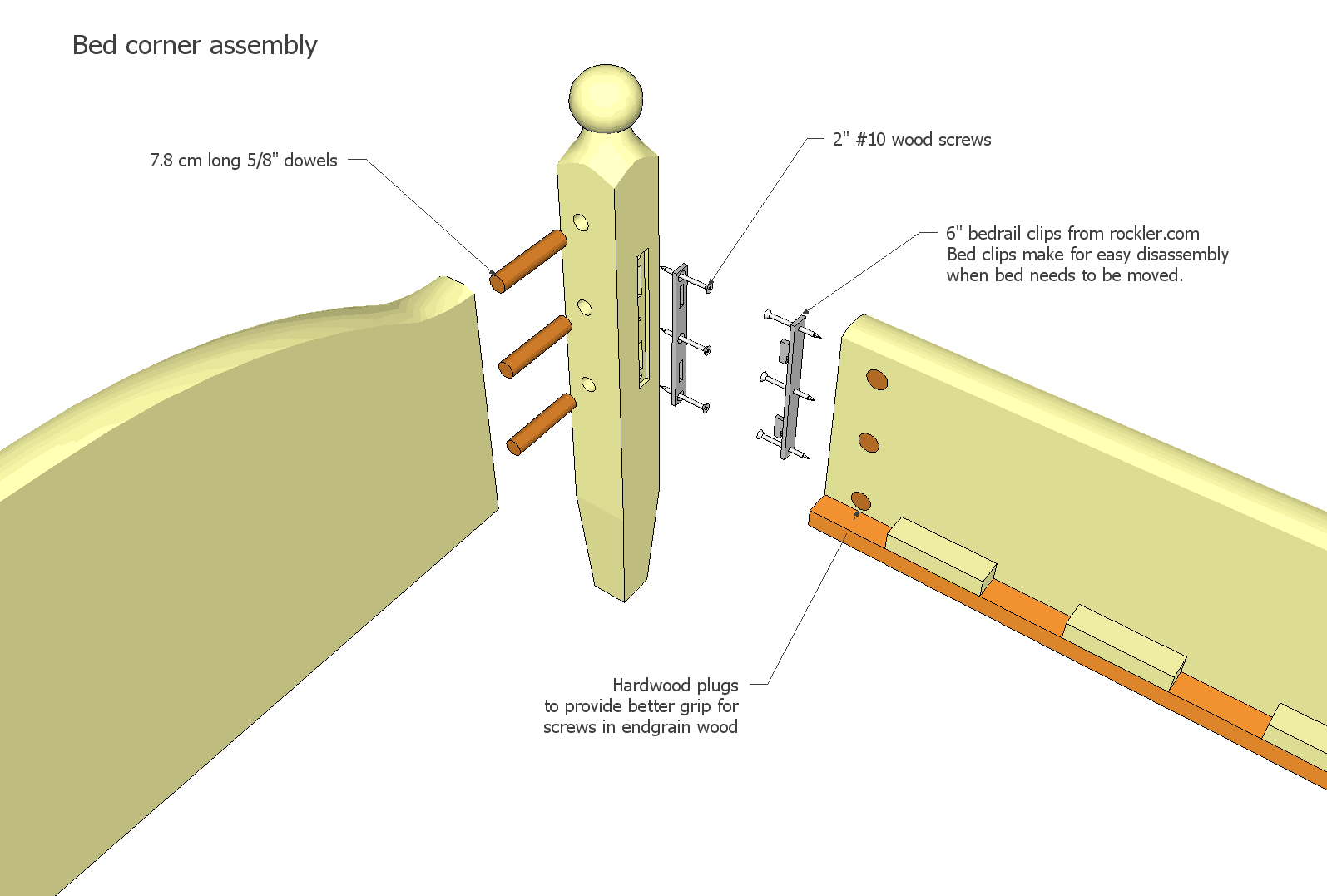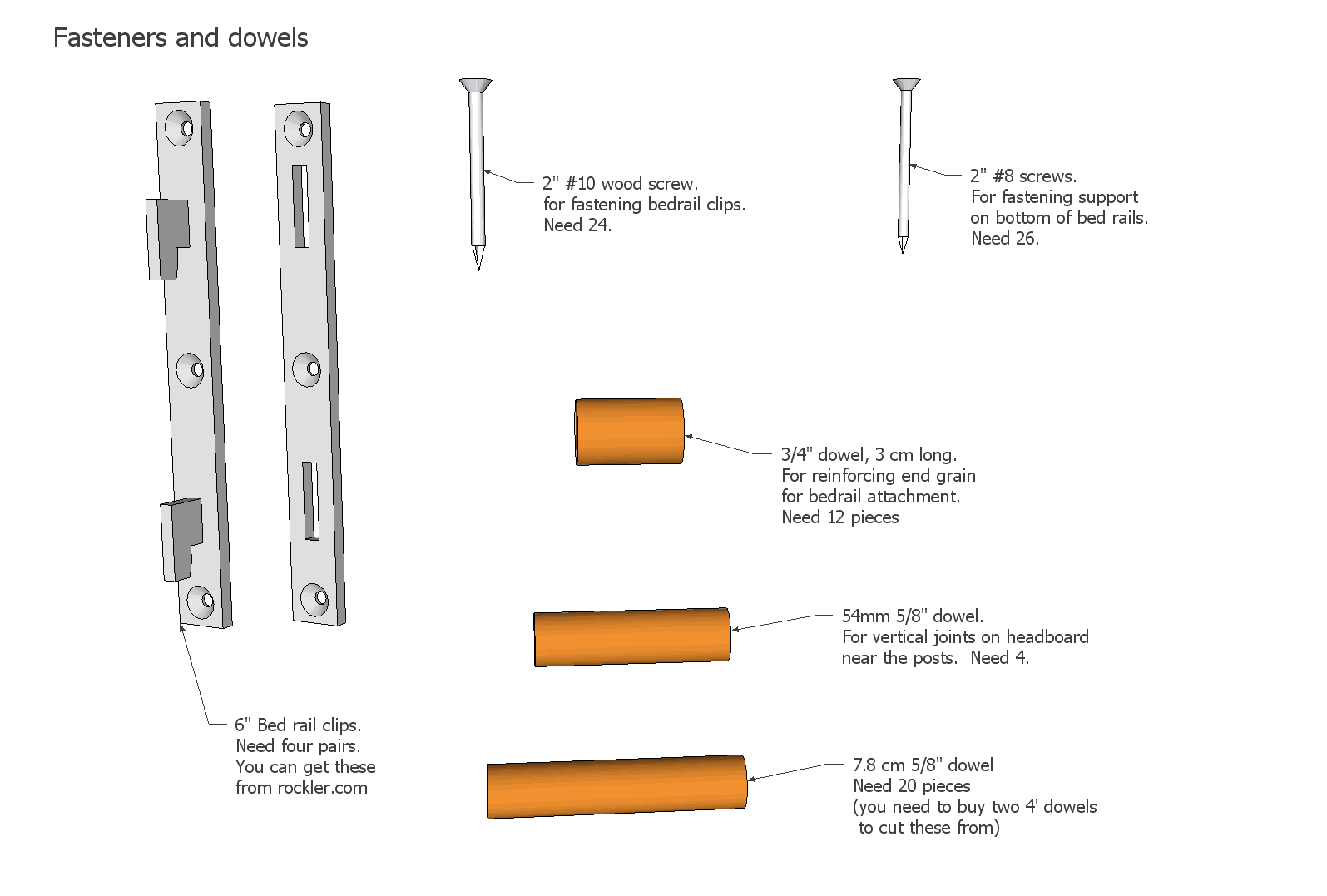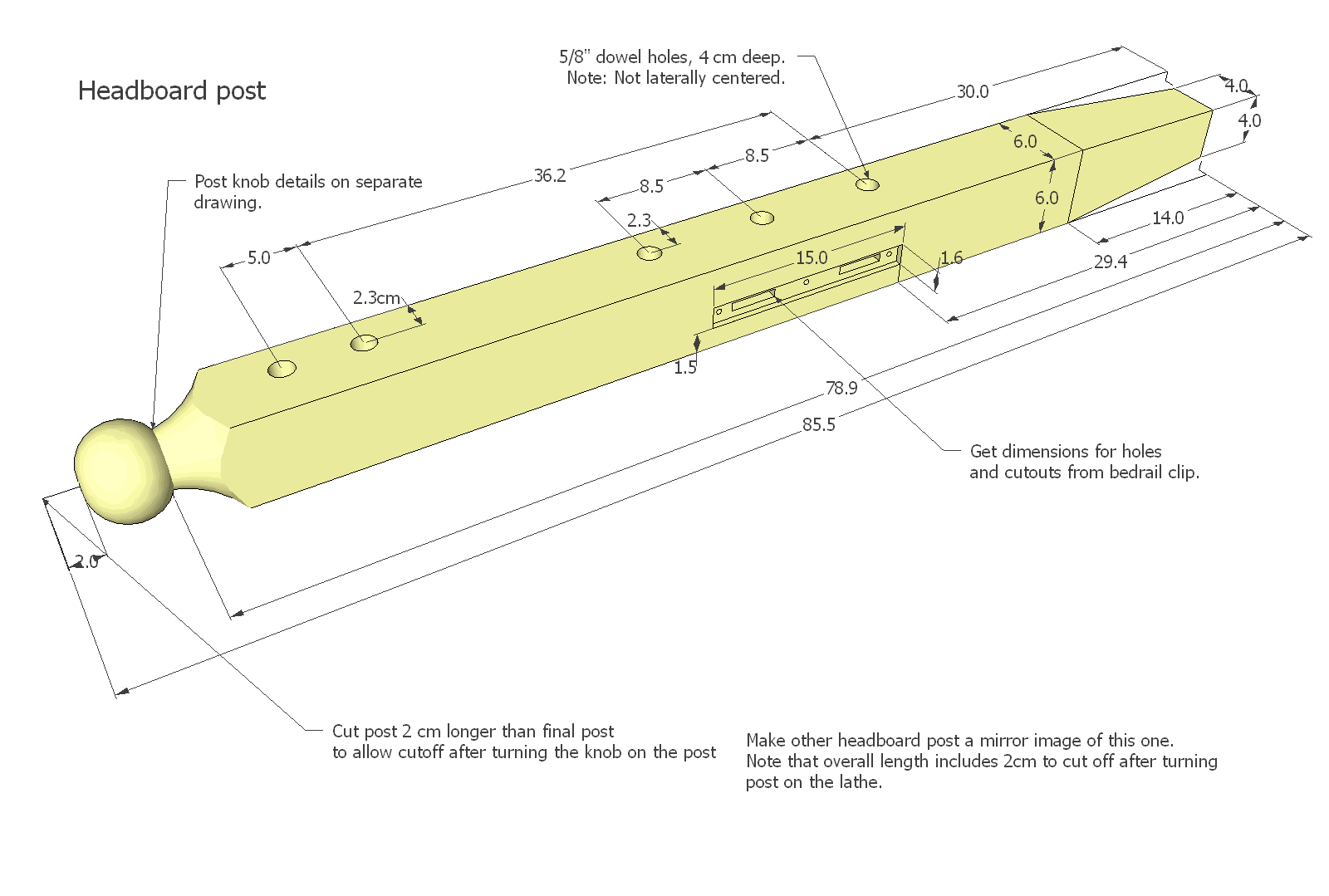
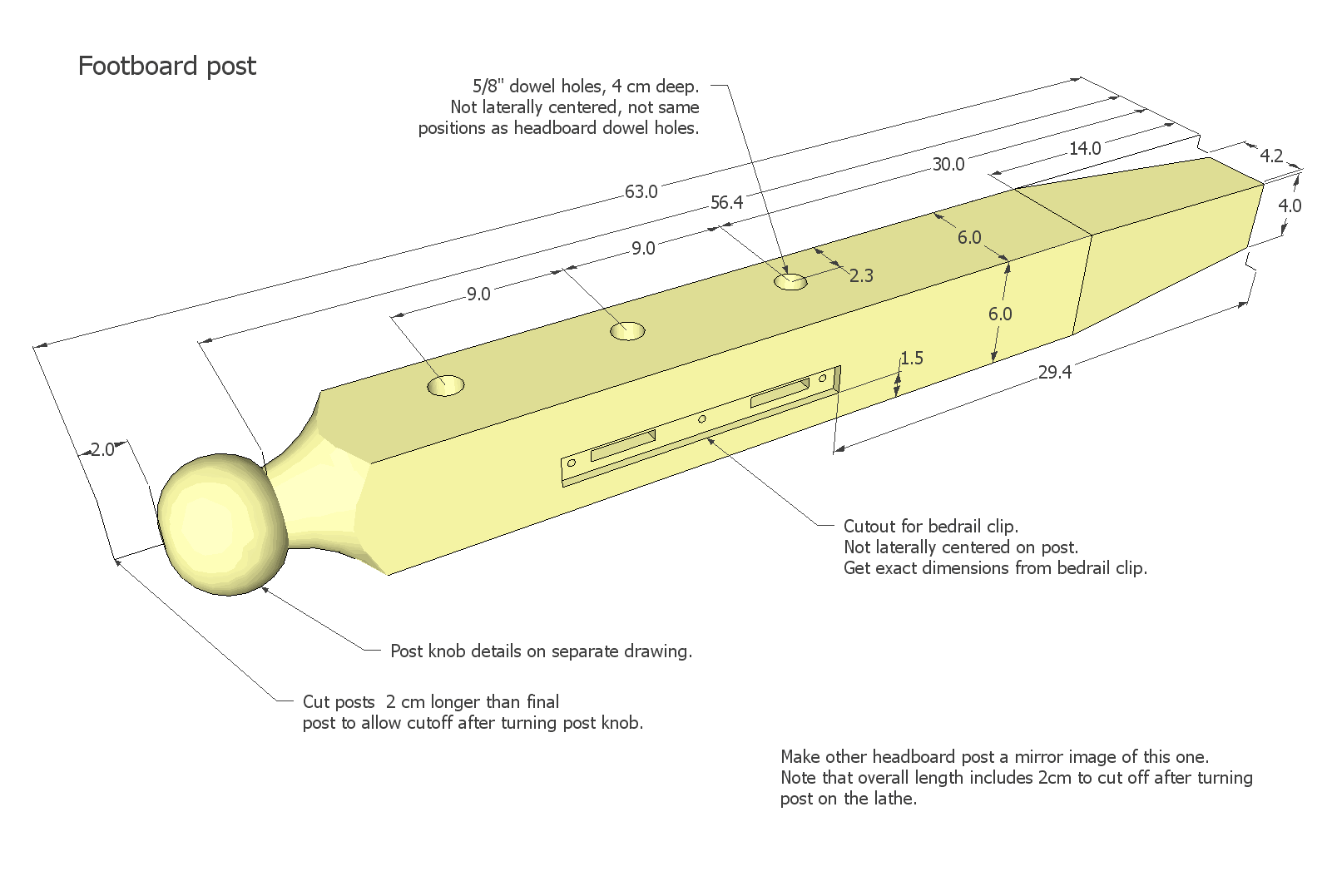
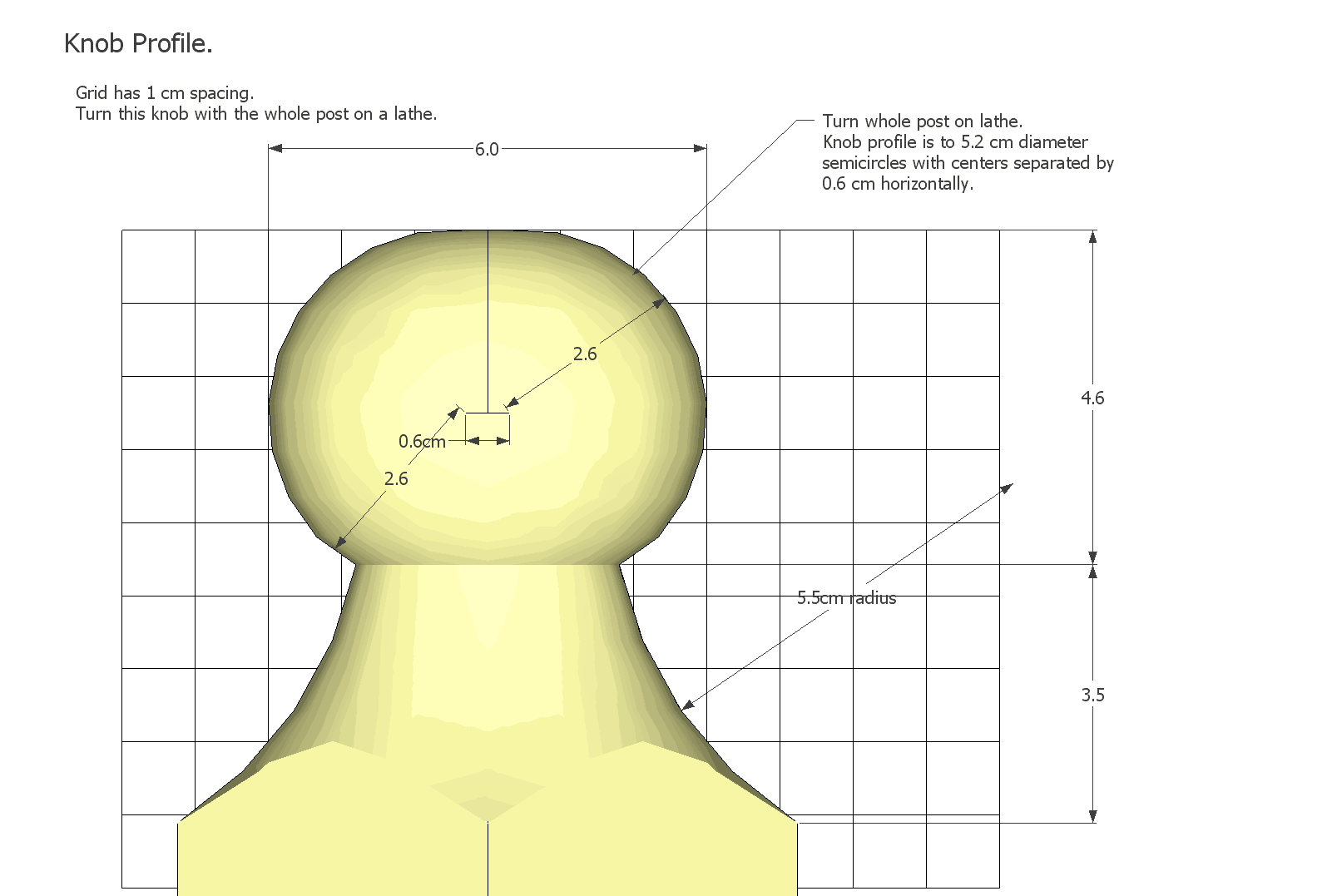




The knobs at the top of the posts are turned by putting the entire post into the lathe. If you don't have a lathe with a very long bed, you may wish to make the knobs separately, and glue them onto the posts. This looks almost as good. The illustration of the bed below is rendered with tapered posts instead of turned posts. You can explore what the bed looks like with tapered posts instead of turned posts by turning on the "sawed posts" layer and hiding the "turned posts" layer.
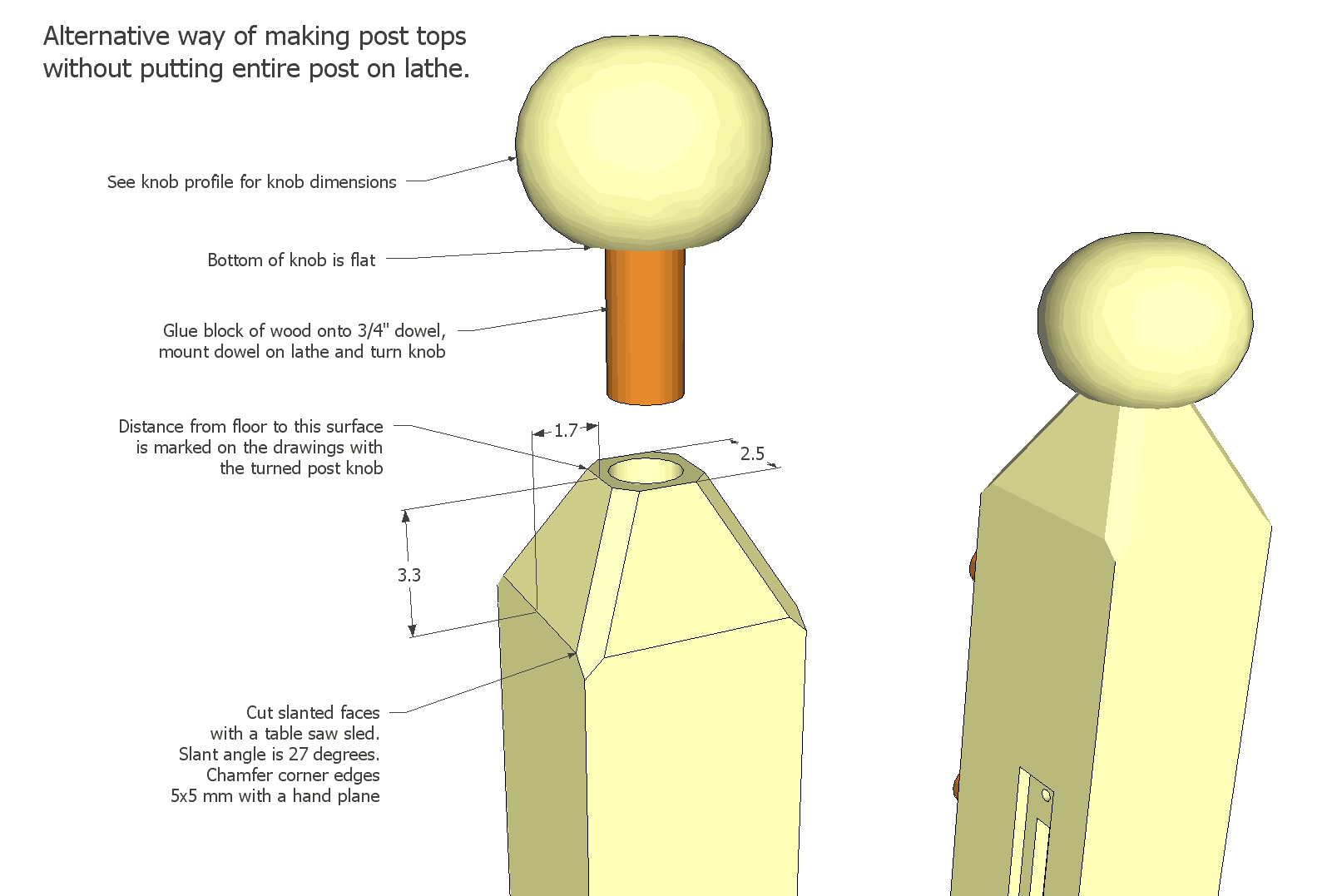
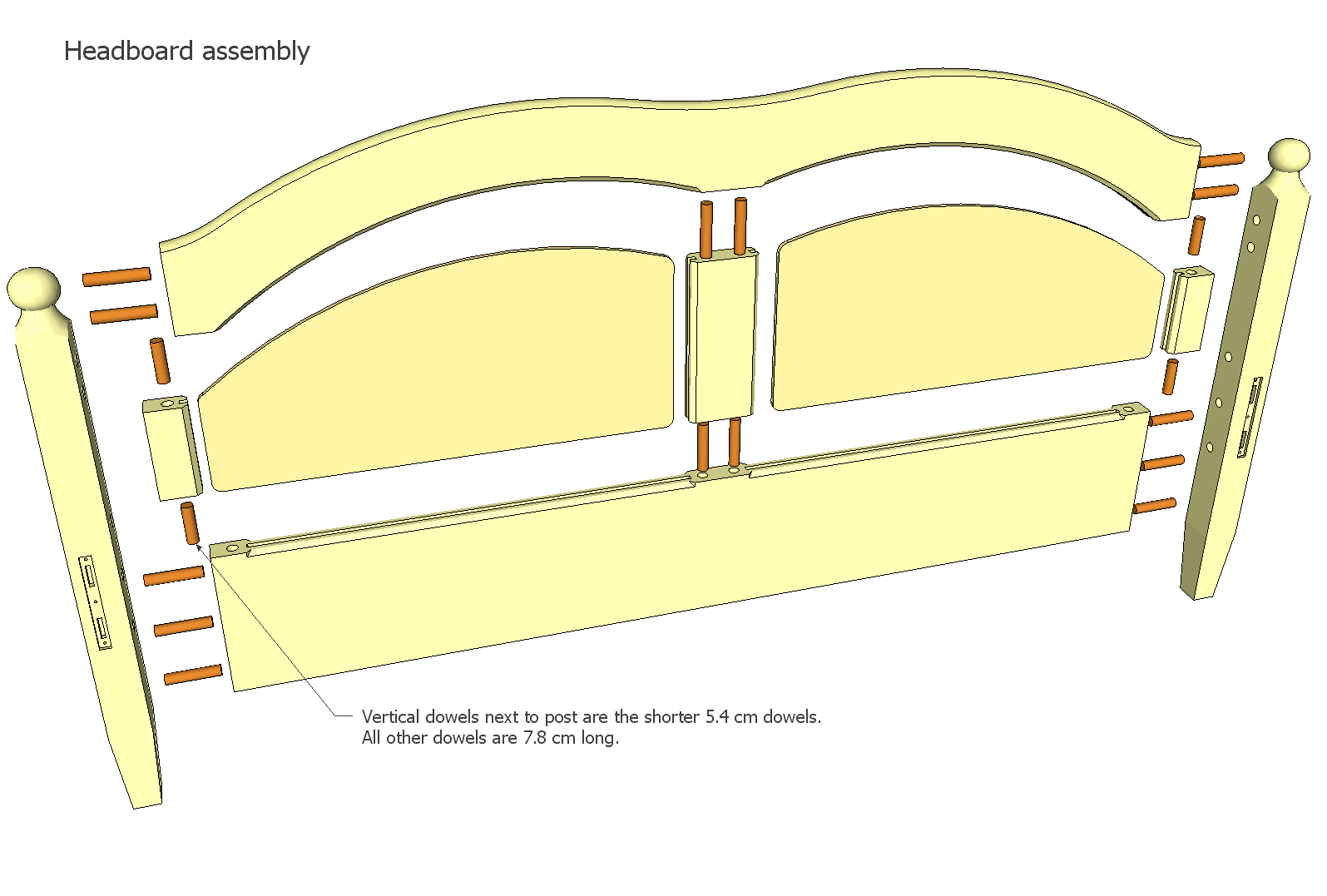
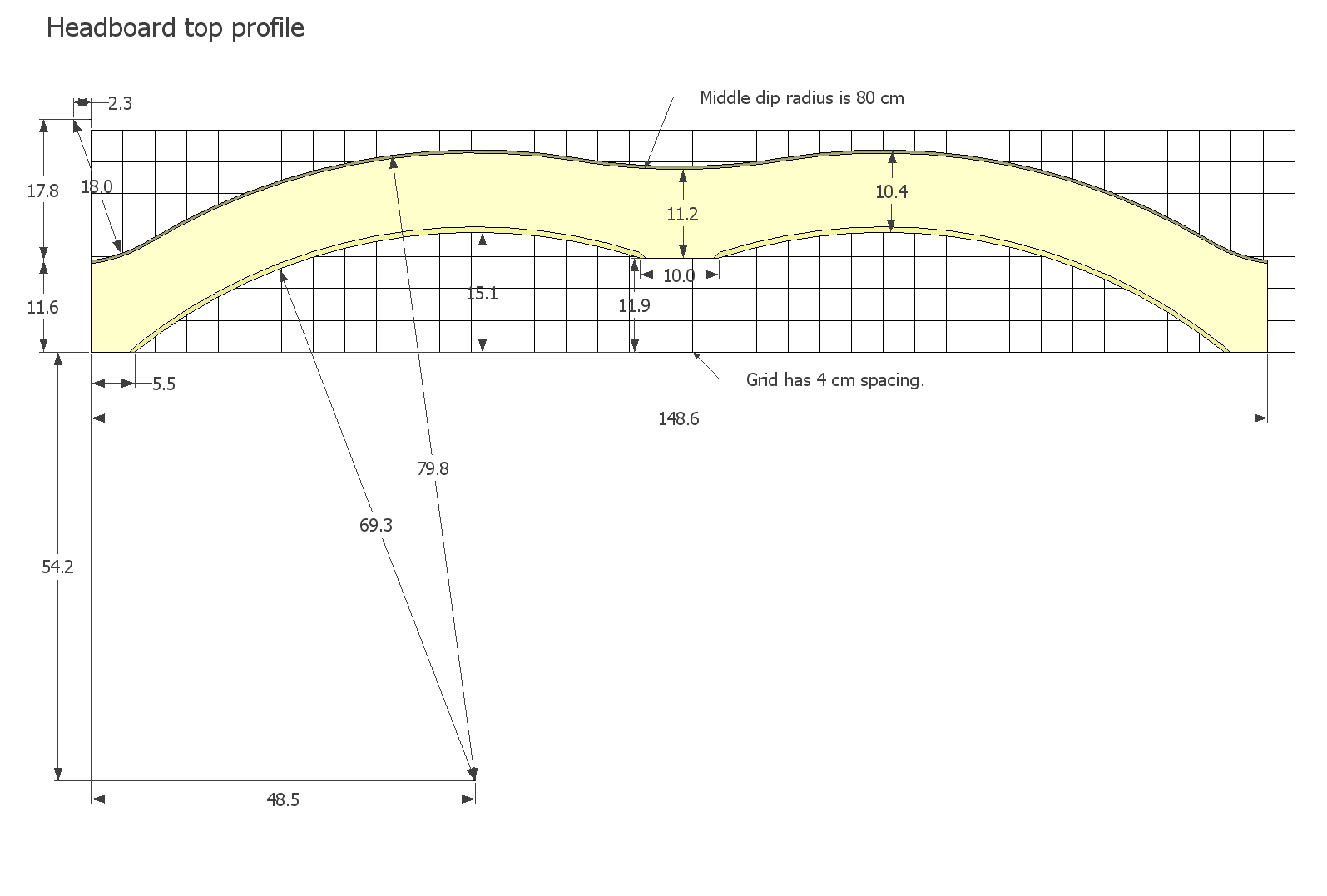
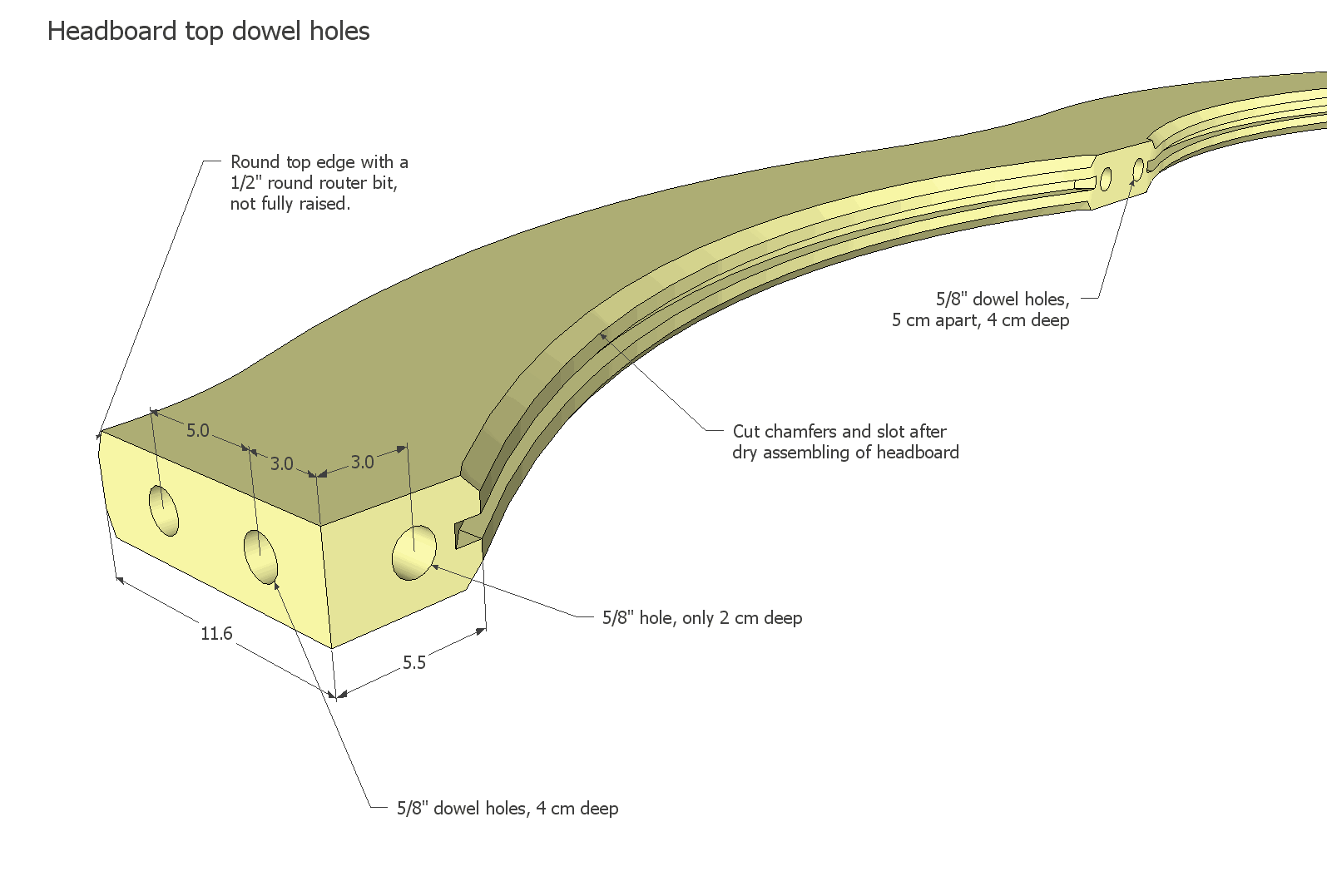
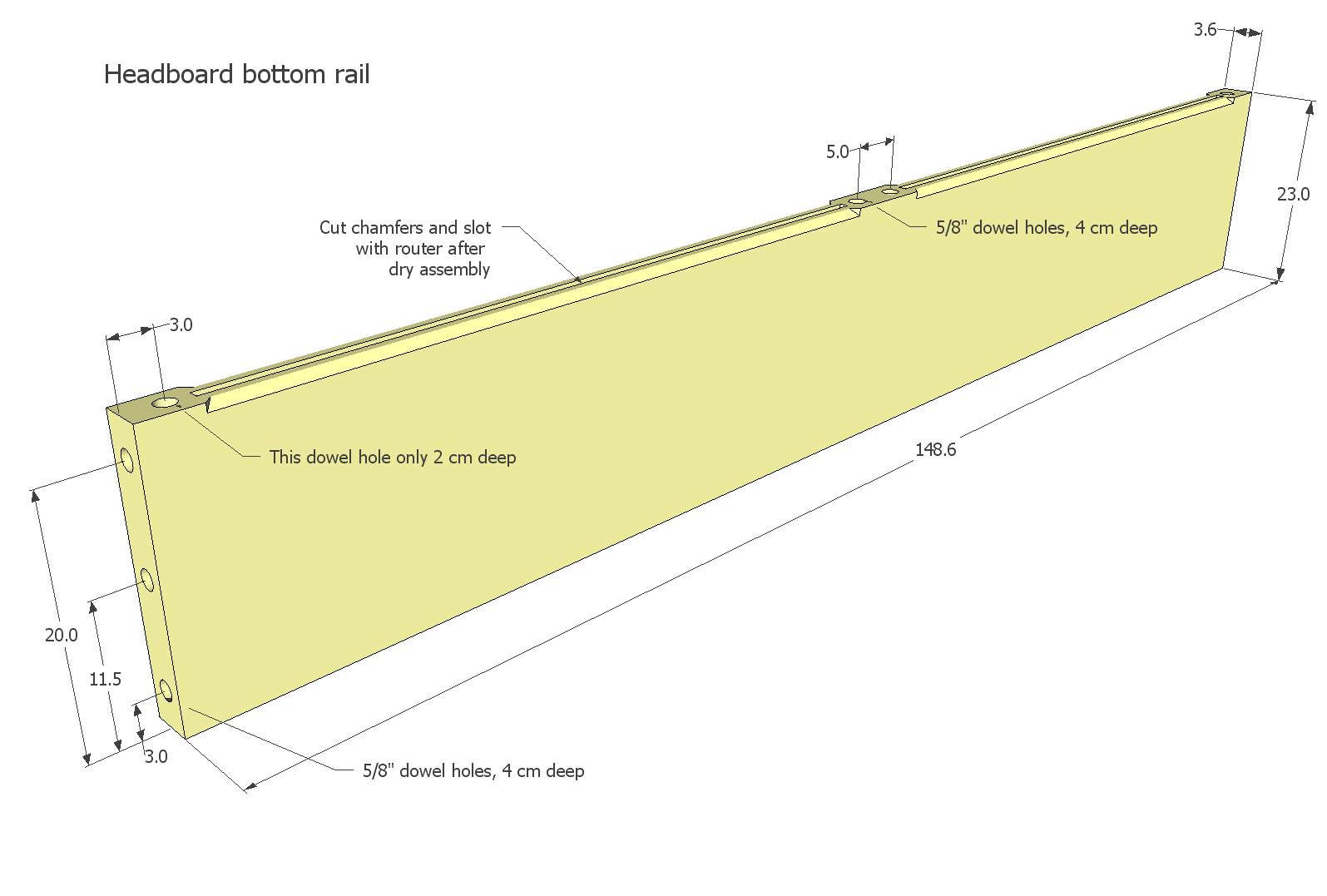
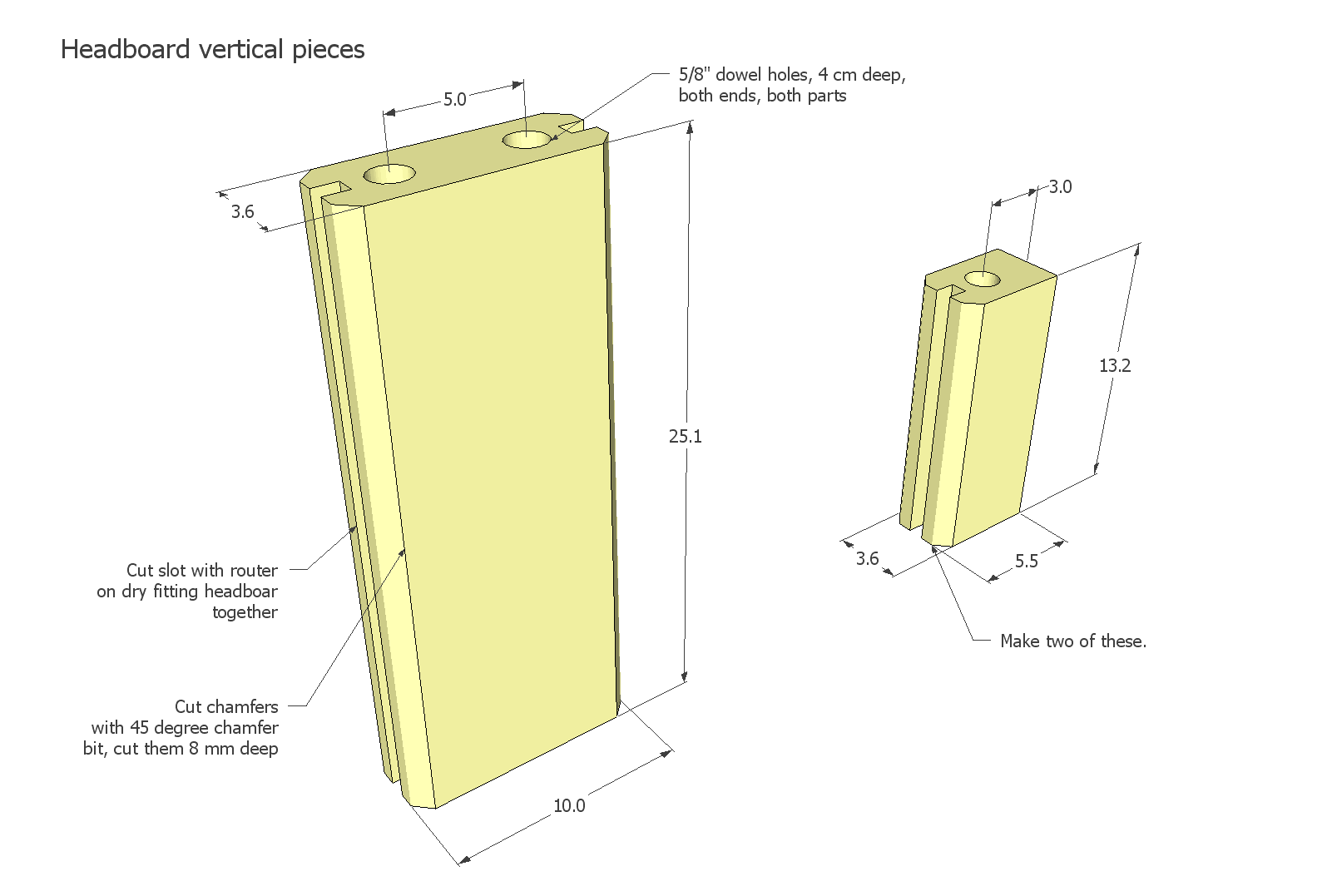
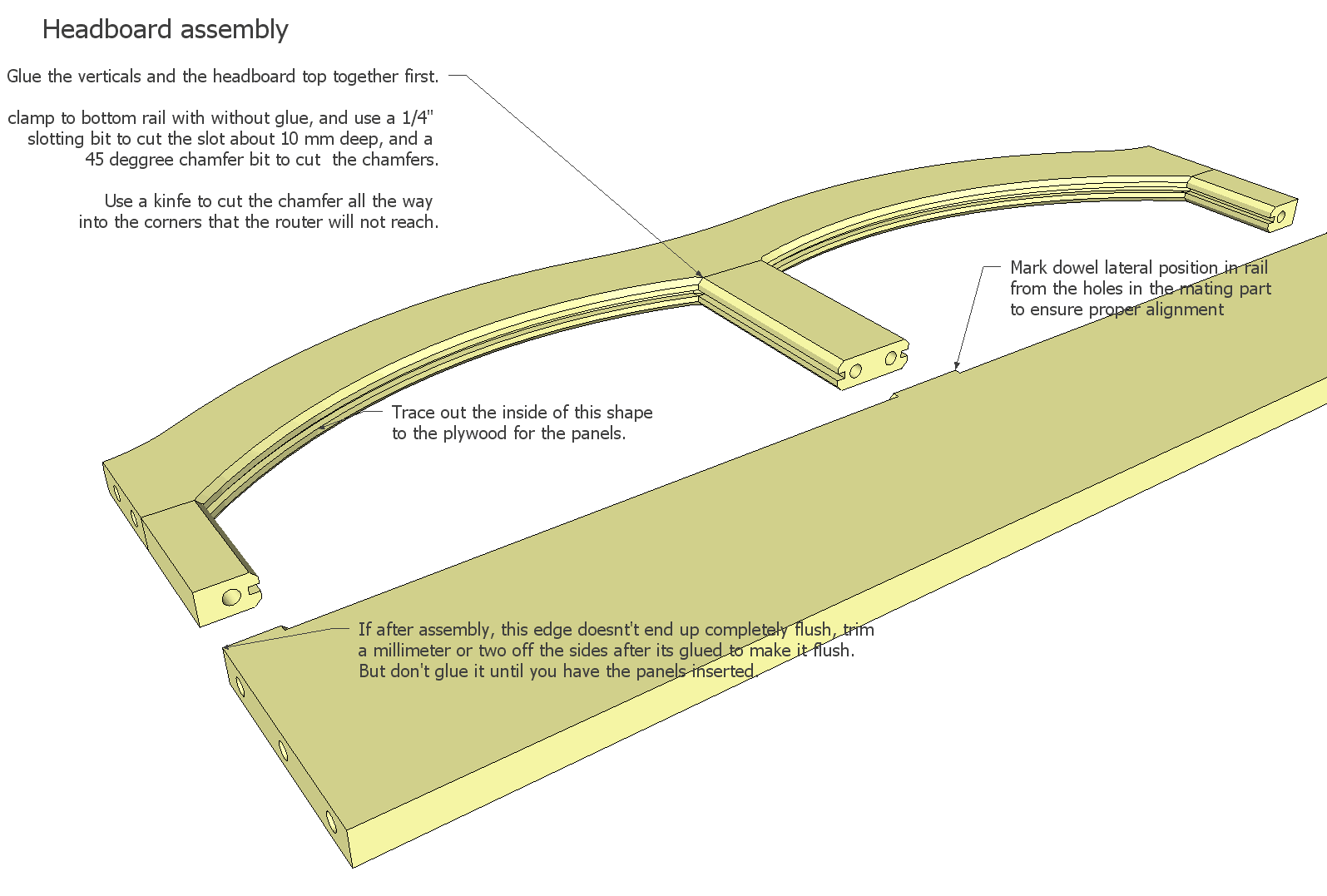 To get the shape of the panel, just trace out the outline from the dry fit assembly onto a piece
of plywood, and offset the outline by the depth of the slot cut on the inside edges of the panels.
To get the shape of the panel, just trace out the outline from the dry fit assembly onto a piece
of plywood, and offset the outline by the depth of the slot cut on the inside edges of the panels.
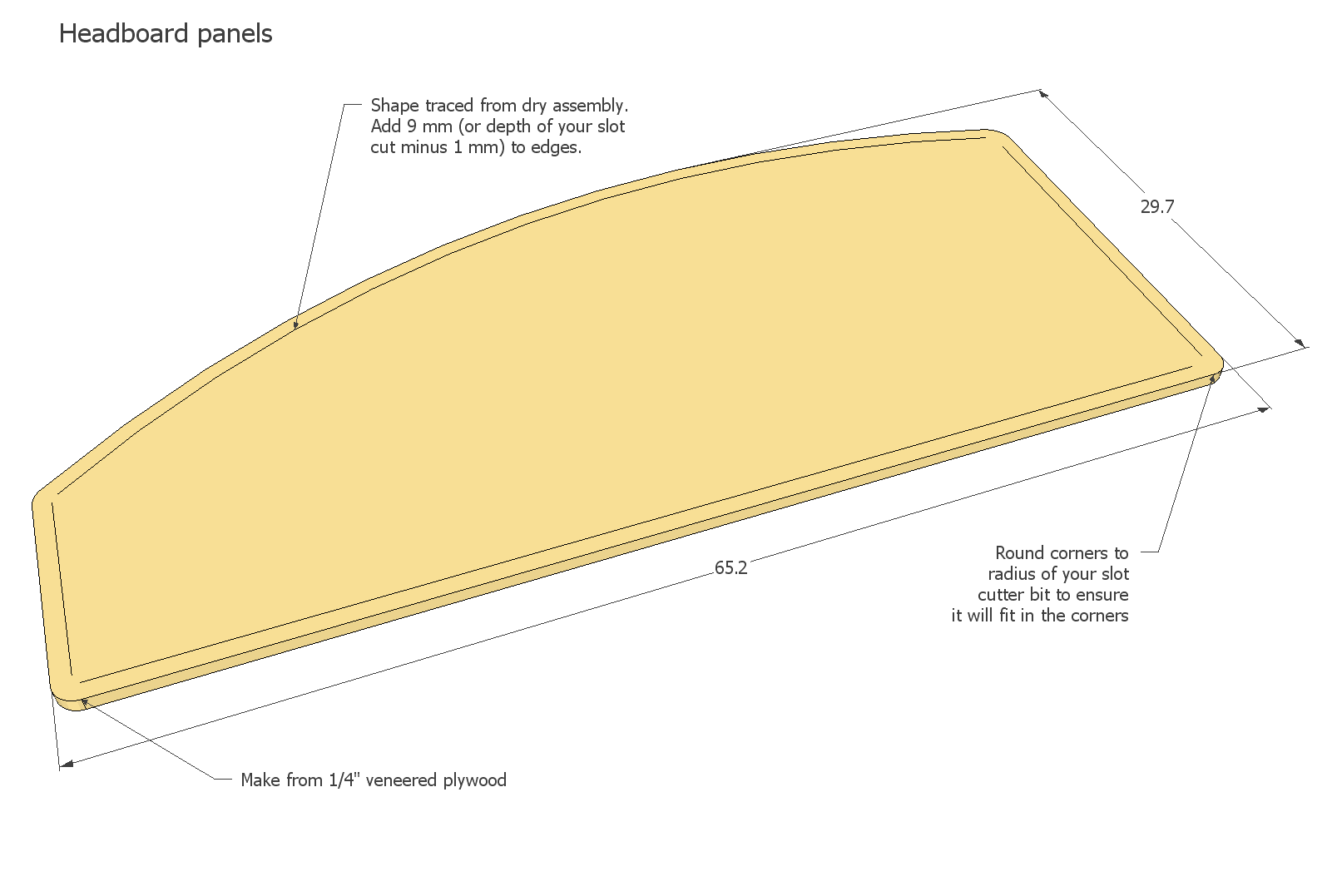
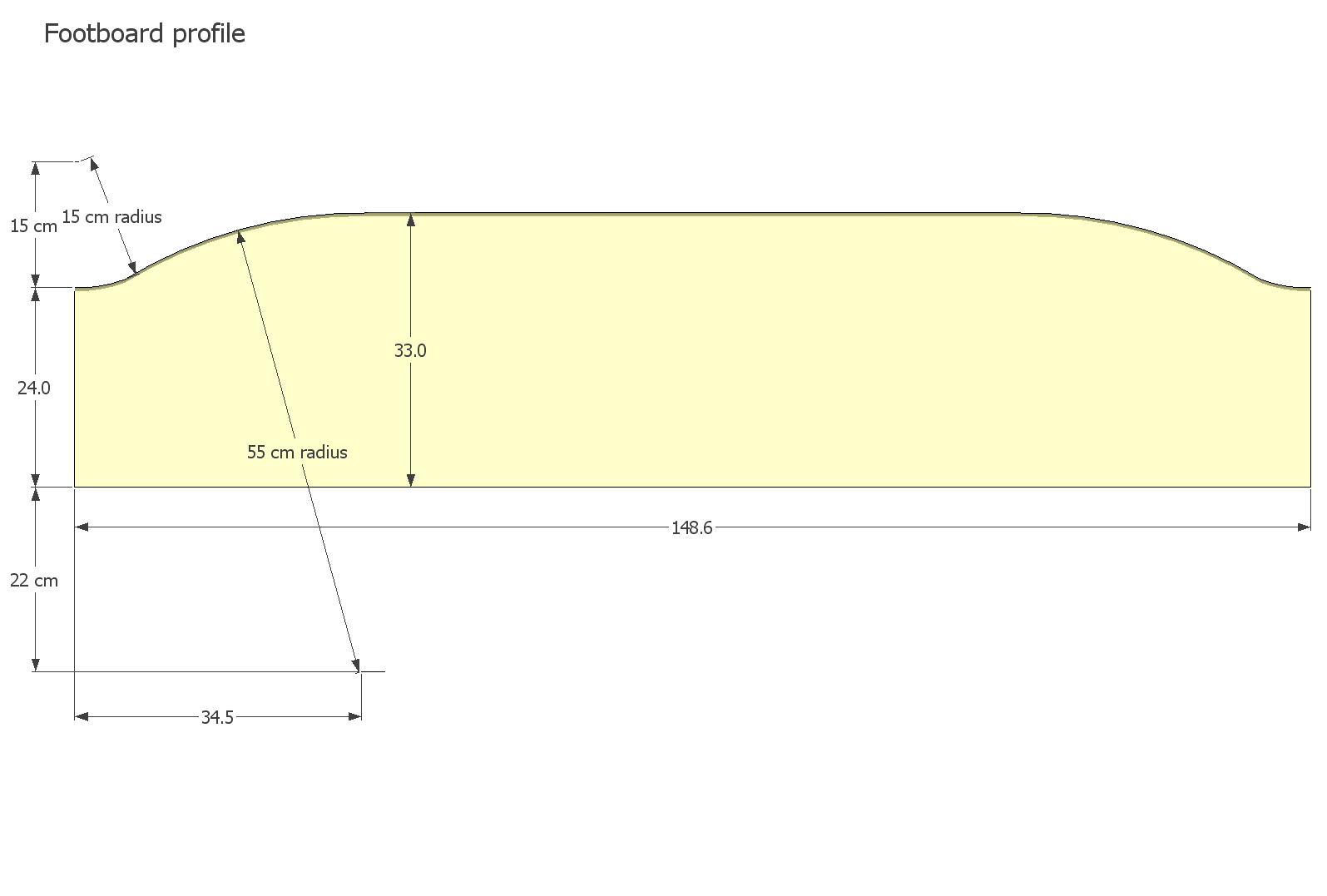
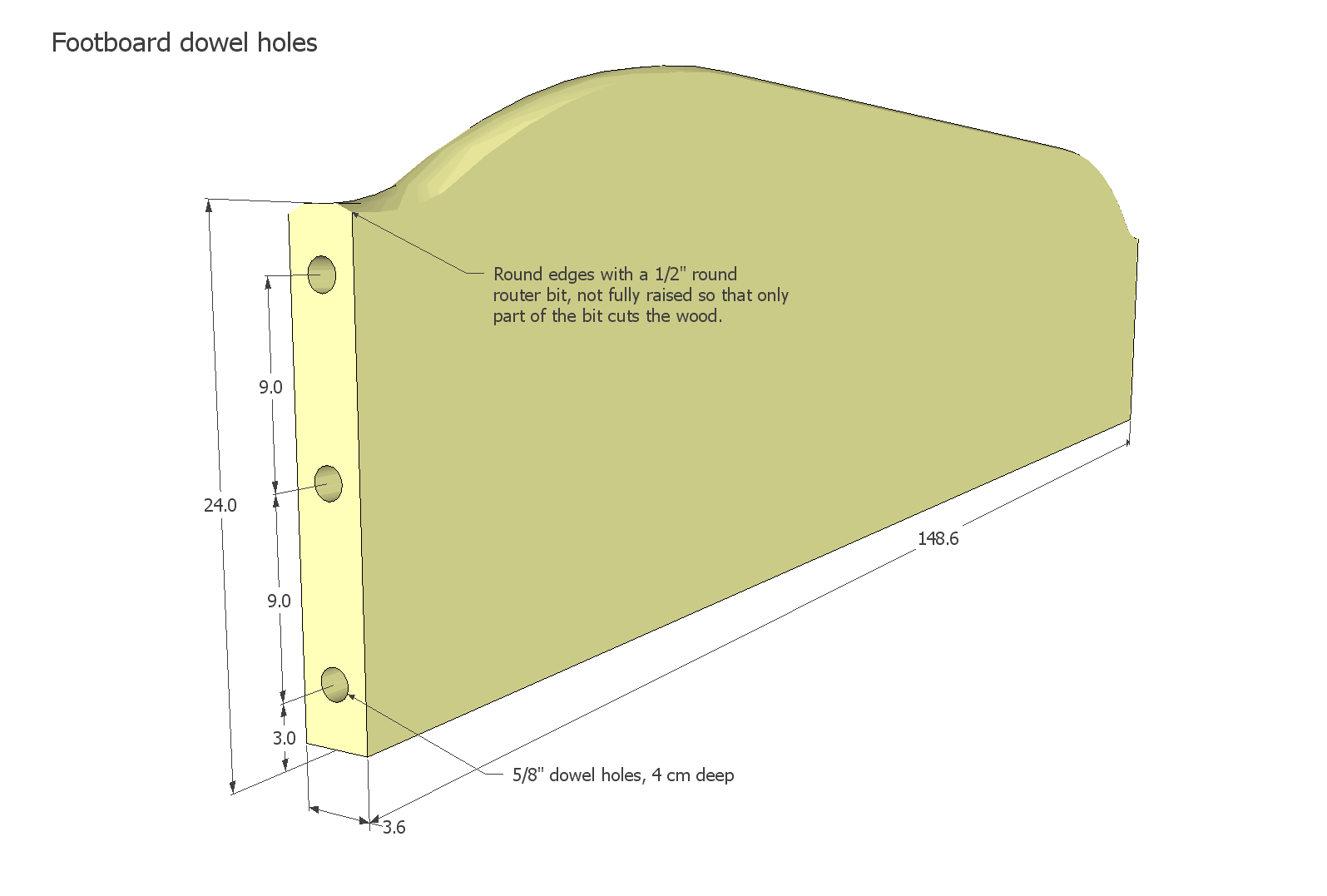
The slats are tapered towards the end to allow them to sit lower in the bed, giving more room for the mattress.
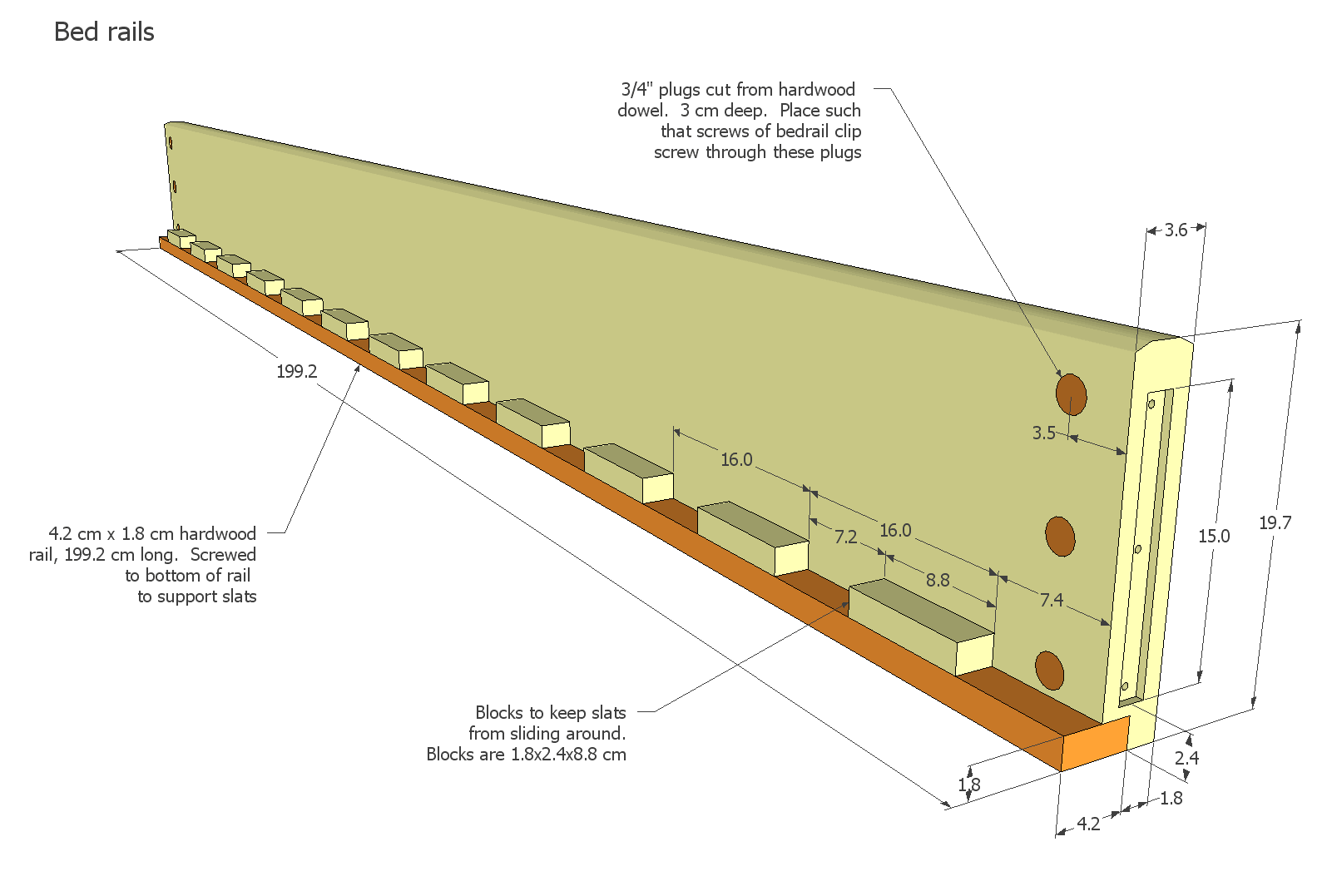
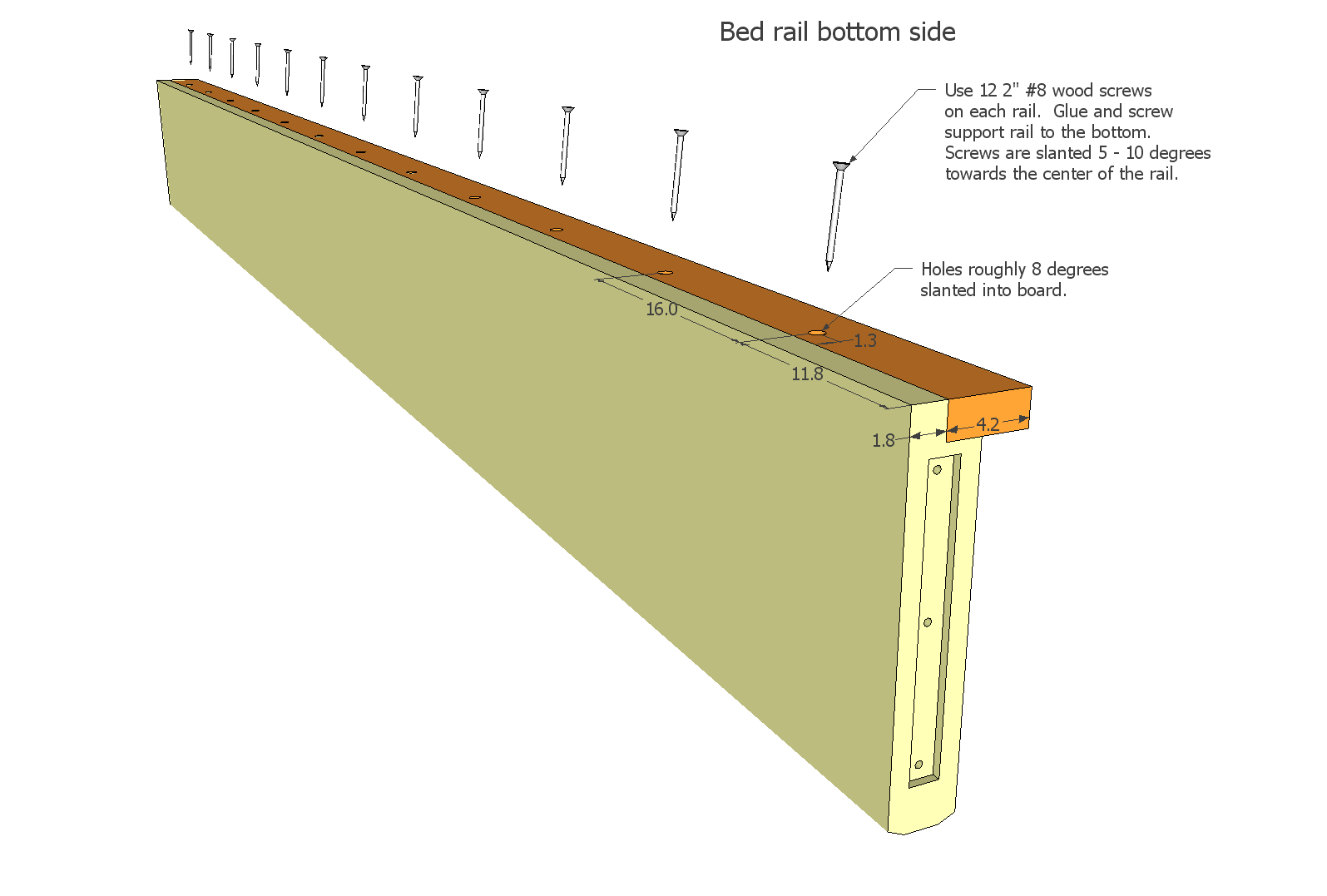
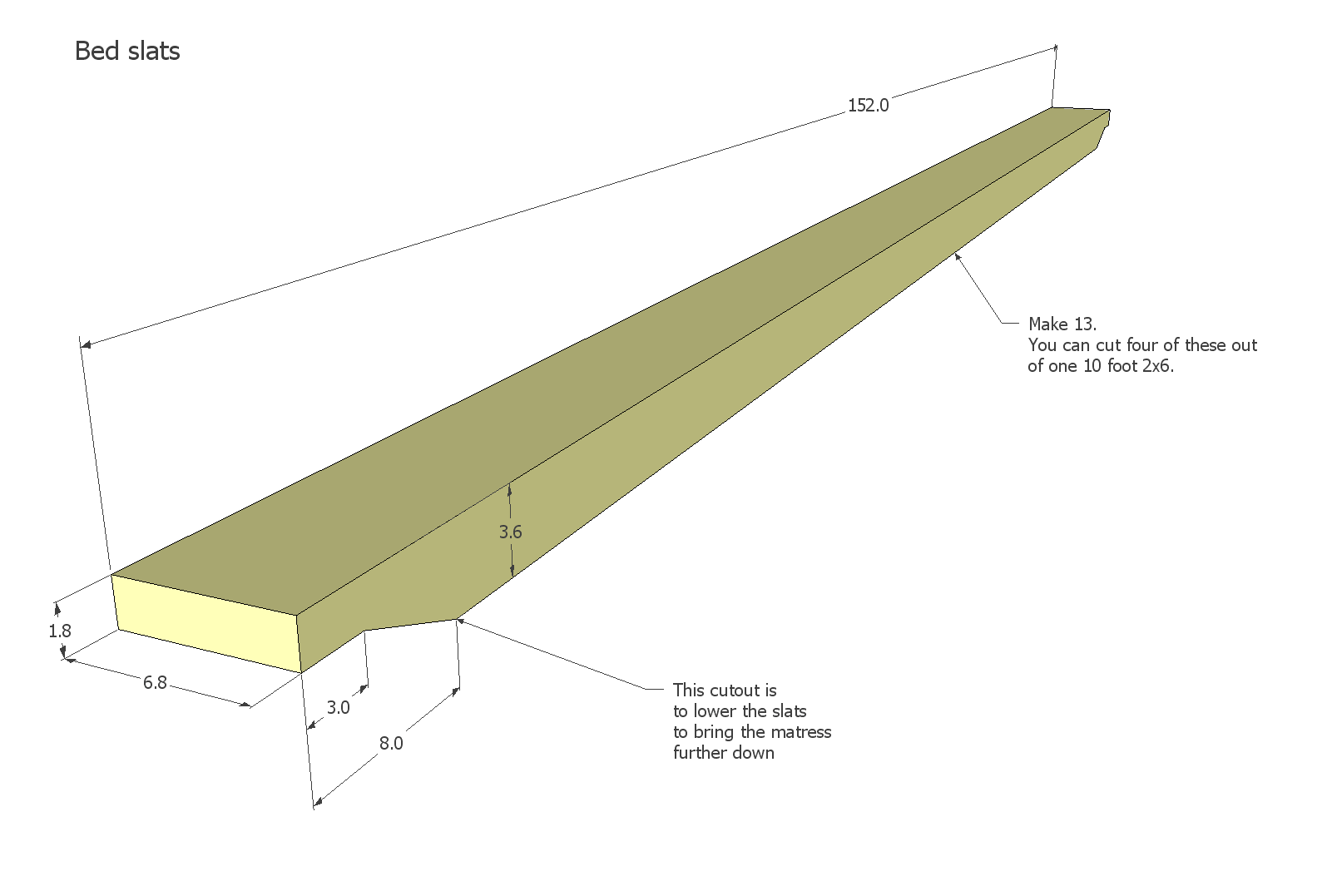
Alternatively, you can use fasten the rails with large pocket holes to avoid having to buy bed rail clips.
